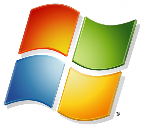warning: i cant bother to finish this rn so it's very unfinished xddddddddddddddd
For the better or (probably) worse, Microsoft Windows is in a constant state of change. Gone are the days of Windows 9x and NT where a major release would be evolutionary instead of revolutionary. This has been happening since Windows XP. But it accelerated to the extreme with the release of Windows 10 in it's unfinished that and ill-fated updates throughout it's life.
Windows needs to change it's course.
Okay, so what are my main gripes with modern versions of Windows? What I mean by a modern version of Windows is anything released after Windows 7. 8 introduced a lot of modernizations to Windows that continued to mature over time. For example: UWP apps, built-in USB 3 support, the new task manager, the ribbon UI file explorer and forcing DWM (the compositor in Windows) to be used. Most of the changes and new features introduced in Windows 8 persist in Windows 10 and some are still in 11.

Alright, so with all that definition out of the way, let's get into complaining about Windows!!!1111
Firstly, the split between the Control Panel and UWP Settings app needs to be addressed. This mutilation of the Control Panel has been occuring since Windows 8. My biggest issue isn't even the move to a UWP app for administrative tasks. Though that's something I'm not really a fan of either. But it's that these 2 applications have completely mismatched designs and that you know, THERE'S TWO APPLICATIONS FOR ADMINISTRATING YOUR SYSTEM.
Honestly, I wouldn't even mind if Microsoft moved fully to UWP for changing settings, It's just that this transition has been occuring at an absolute snails pace. I'm like, fine. I'll deal with the split Control Panel / Settings deal you've got here. Then some random assortment of options get moved to Settings and I'm like, why? It's incredibly inconvinient for a user to have to deal with these changes after an annual upgrade.
I feel like the best way that Microsoft could've handled the transition to in a better way by never removing anything from the Control Panel until Settings is ready to replace it. By doing this, you're reducing the amount of times people will have to flip-flop between the 2.until it's actually got feature parity with the Control Panel. Once Settings is at the point where it can replace the Control Panel, then remove it in the next major release of Windows.
Secondly, UPDATES. Windows has always been behind it's competition when it comes to how updates are pushed out. Updates have always been slow to download and they've always required a restart for nearly every kind of update. But at least they actually worked and had 2
 |
| 